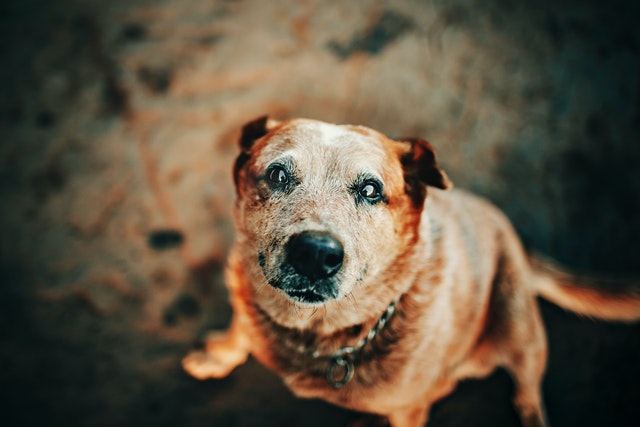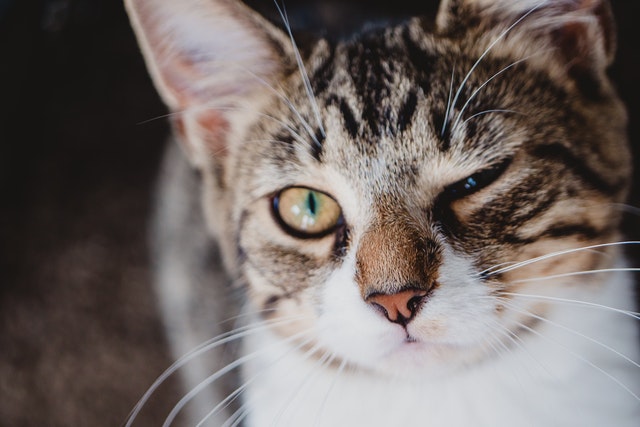Please select a Dog breed
Abruzzese Mastiff
Affenpinscher
Afghan Hound
African Boerboel
African Hairless
Aidi
Ainu Dog
Airedale Terrier
Akbash
Akita
Alano Espanol
Alapaha Blue Blood Bulldog
Alaskan Husky
Alaskan Klee Kai
Alaskan Malamute
All American Dog
Alopekis
Alpine Dachsbracke
Alsatian
American Alaskan Spitz
American Allaunt
American Alsatian
American Bandogge Mastiff
American Barbet
American Black and Tan Coonhound
American Blue Gascon Hound
American Blue Heeler
American Bulldog
American Bullnese
American Bully
American Cocker Spaniel
American Curl Shorthair
American English Coonhound
American Eskimo Dog
American Eskimo Dog - miniature
American Foxhound
American Hairless Terrier
American Indian Dog
American Leopard Hound
American Lo-Sze Pugg
American Mastiff
American Pit Bull Terrier
American Royal Retriever
American Staffordshire Bull Terrier
American Staffordshire Terrier
American Staghound
American Tundra Shepherd
American Water Spaniel
American White Shepherd
Anatolian Shepherd Dog
Anatolian/Karabash Shepherd
Anglo Francais
Anglo-French Hound
Appenzell Mountain Dog
Appenzeller Sennenhund
Argentine Dogo
Ariegeois
Ariegoeis
Armant
Armenian Gampr (Wolfhound)
Artois Hound
Arubian Cunucu
Atlas Dog
Aussalier
Aussiedoodle
Australian Cattle Dog
Australian Cobberdog
Australian Dingo
Australian Kelpie
Australian Koolie
Australian Labradoodle
Australian Shepherd
Australian Silky Terrier
Australian Stumpy Tail Cattle
Australian Terrier
Austrian Brandlbracke
Austrian Coarse-haired Hound
Austrian Grand Brackes
Austrian Hound
Austrian Pinscher
Austrian Short Haired Pinscher
Auvergne Setter
Azawakh
Azawakh Hound
Azores Cattle Dog
Bagel
Bagel (Bagle Hound)
Bagle
Balkan Hound
Balkanski Gonic
Bambino
Banjara Greyhound
Bantam Bulldog
Banter Bulldogge
Barbado da Terceira
Barbet
Basenji
Basset Artesian Normand
Basset Bleu De Gascogne
Basset Fauve De Bretagne
Basset Griffon Vandeen
Basset Hound
Bassetoodle
Bavarian Mountain Dog
Bavarian Mountain Hound
Bavarian Mountain Hunting Dog
Bavarian Mountain Scent Hound
Beabull
Beagle
Beagle Harrier
Bearded Collie
Beauce Shepherd
Beauceron
Bedlington Terrier
Belgian Griffon
Belgian Laekenois
Belgian Malinois
Belgian Mastiff
Belgian Sheepdog
Belgian Shepherd
Belgian Shepherd Groenendael
Belgian Shepherd Laekenois
Belgian Shepherd Malinois
Belgian Shepherd Tervuren
Belgian Tervuren
Bergamasco
Bergamasco Sheepdog
Berger Blanc Suisse
Berger Blanc Swiss
Berger De Bresse
Berger De Picard
Berger De Savoie
Berger des Pyrenees
Berger Du Languedoc
Berger Picard
Bernadoodle
Bernedoodle
Bernese Hound
Bernese Mountain Dog
Bichon Frise
Bichpoo
Biewer
Biewer Terrier
Billy
Black And Tan Coonhound
Black Forest Hound
Black Mouth Cur
Black Russian Terrier
Blackmouth Cur
Blenheim & Prince Charles English Toy Spaniel
Bloodhound
Blue Heeler
Blue Lacy
Blue Picardy Spaniel
Boar Hound
Boerboel
Bogle
Bohemian Shepherd
Bolognese
Bolonka
Border Collie
Border Terrier
Borzoi
Borzoi/Russian Wolfhound
Bosnian Coarse Haired Hound
Boston Terrier
Bourbonnais Setter
Bouvier des Ardennes
Bouvier Des Flandres
Boxer
Boykin Spaniel
Bracco Italiano
Braque d Auvergne
Braque Du Bourbonnais
Braque Francais
Braque Francais Gascogne
Braque Francais Pyrenean
Braque Francais Pyrenees
Braque Saint-Germain
Brazilian Fila
Brazilian Guard Dog
Brazilian Terrier
Brazilian Tracker
Briard
Briquet Griffon Vendeen
Brittany
Brittany Spaniel
Brittany, French
Broholmer
Brussels Griffon
Bugg
Bull Boxer
Bull Terrier
Bull Terrier - miniature
Bull Terrier - Standard
BullBoxer
Bulldog
Bulldog, Toy
Bulldog, Victorian
Bullmastiff
Bulloxer
Ca de Bou
Cairn Terrier
Cambodian Razorback Dog
Canaan Dog
Canadian Eskimo
Canadian Eskimo/Inuit
Canadian Husky
Canary
Cane Corso
Cane Di Oropa
Cane Toccatore
Cao de Fila de Sao Miguel
Cardigan Welsh Corgi
Carolina Dog
Carpathian Shepherd Dog
Castro Laboreiro Dog
Catahoula Cur/Leopard Dog
Catahoula Leopard
Catalan Sheepdog
Catalan Sheepdogs
Catalonian Shepherd
Caucasian Mountain Dog
Caucasian Ovcharka
Caucasian Ovtcharka
Caucasian Shepherd Dog
Cavachon
Cavalier King Charles Spaniel
Cavapoo
Central Asian Outcharka Shepherd
Central Asian Ovtcharka
Central Asian Shepherd
Cesky Fousek
Cesky Terrier
Chanille
Charplaninatz
Chasa Apso
Chesapeake Bay Retriever
Chien D Artois
Chihuahua
Chihuahua (Long Coat)
Chihuahua (Short Coat)
Chihuahua long-haired
Chihuahua Smooth Coat
Chinese Chongqing
Chinese Crested
Chinese Crested Hairless
Chinese Crested Powder Puff
Chinese Foo
Chinese Imperial
Chinese Pug
Chinese Shar-Pei
Chinook
Chipom
Chipoo
Chiweenie
Chodsky Pes
Chorkie
Chow Chow
Chug
Cimarrón Uruguayo
Cirneco dell 'Etna
Cirneco dell Etna
Clumber Spaniel
Cobber Dog
Cockapoo
Cocker Spaniel
Cocker Spaniel Miniature
Cocker-Pei
Collie
Collie - Rough
Collie - Smooth
Comfort Retriever
Coon Hound
Coonhound
Coonhound - black and tan
Coonhound - blue tick
Coonhound - red bone
Coonhound-American English
Coonhound-Treeing Walker
Corgi
Coton De Tulear
Croatian Sheepdog
Cur, Black-Mouth
Cur, Mountain
Curly-Coated Retriever
Czech Coarse-haired Setter
Czech Shepherd
Czechoslovakian Wolfdog
Czechoslovakian Wolfdog (Vlcak)
Dachshund
Dachshund miniature
Dachshund-Long Haired
Dachshund-Miniature Long Haired
Dachshund-Miniature Smooth Haired
Dachshund-Miniature Wire Hair
Dachshund-Smooth Haired
Dachshund-Wire Haired
Dachshund, Miniature Short Haired
Dachshund, Standard Short Haired
Dalmatian
Damchi
Dandie Dinmont Terrier
Danish Broholmer
Danish Swedish Farmdog
Deerhound
Deerhound, Scottish
Designer / Hybrid
Deutsch Drahthaar
Deutscher Wachtelhund
Dingo
Dingo/Carolina
Doberman Pinscher
Dogo Argentino
Dogue De Bordeaux
Dorgie
Dorkie
Dosa Inu
Double Doodle
Doxiepoo
Drentsche Patrijshond
Drentsche Patrijshond (Dutch Partridge Dog)
Drentsche Patrijshond/Dutch Patridge Dog
Drentse Partridge Dog
Drever
Dunker
Dunker Hound
Dunker/Norwegian Hound
Dupuy Setter
Dutch Sheepdog
Dutch Shepherd
Dutch Shepherd Dog
Dutch Smoushond
East European Shepherd
Elf
Elkhound
English Bull
English Bull Terrier
English Bulldog
English Cocker Spaniel
English Coonhound
English Cream Retriever
English Foxhound
English Labrador
English Mastiff
English Pointer
English Retriever
English Setter
English Shepherd
English Springer Spaniel
English Toy Spaniel
English Toy Terrier
Entlebuch Mountain Dog
Entlebucher Mountain Dog
Entlebucher Sennenhund
Eskimo Dog
Estonian Hound
Estrela Mountain Dog
Eurasian/Eurasier
Feist
Feist Dog Large: 60+ lbs
Feist Dog Medium: 31 - 59 lbs
Feist Dog Small: 11 - 30 lbs
Fell Terrier
Field Spaniel
Fila Brasileiro
Fila Brasileiro/Brazillian Mastiff
Finnish Hound
Finnish Lapphund
Finnish Spitz
Flat-coated Retriever
Formosan (Taiwanese) Mountain Dog
Fourche Terrier
Fox Hound
Fox Terrier
Foxhound
Foxhound, American
Foxhound, English
French Bulldog
French Hound
French Mastiff
French Spaniel
Frenchie Pug
Frenchton
Galgos (Spanish Greyhound)
Ganaraskan
Gascogne Braque Francais
Gazelle Hound
German Hunt Terrier
German Longhaired Pointer
German Pinscher
German Retriever
German Shepherd
German Shepherd, King
German Shorthaired Pointer
German Spaniel
German Spitz
German Spitz (Klein)
German Wirehaired Pointer
German/Mittel Spitz
Giant Schnauzer
Glen Of Imaal Terrier
Goldador
Golden Labrador (hybrid)
Golden Retriever
Goldendoodle
Gonchaya Ruskaya
Gordon Setter
Gran Mastin de Borinquen
Grand Basset Griffon Vendéen
Grand Bleu de Gascogne
Grand Bleu De Gascoigne
Grand Gascon-Saintongeois
Great Bernese
Great Dane
Great Gascony Blue
Great Pyrenean
Great Pyrenees
Greater Swiss Mountain
Greek Greyhound
Greek Harehound
Greenland Dog
Greyhound
Griffon
Griffon Brabancon
Griffon Brusellois
Griffon Bruxellois
Griffon Nivernais
Griffon Vendeen, Briquet
Griffon Vendeen, Grand Basset
Griffon Vendeen, Petit Basset
Griffon, Brussels
Griffon, Korthals
Griffon, Wirehaired Pointing
Groenendael
Haldenstoever
Haldenstovare
Hamiltonstovare
Hanover Hound
Hanoverian Scenthound
Harlequin Pinscher
Harrier
Havana Silk
Havanese
Havapoo
Havashu
Hellenic Hound
Himalayan Sheepdog
Hokkaido
Hokkaido (Ainu)
Hound
Hovawart
Hungarian Coarse-Haired Vizsla
Hungarian Greyhound
Hungarian Kuvasz
Hungarian Puli
Hungarian Pumi
Hungarian Sheepdog
Hungarian Vizsla
Hungarian Wire Haired Vizsla
Husky
Hygenhund
Ibiizian Wolfhound
Ibizan Hound
Iceland Sheepdog
Icelandic Sheepdog
Inca Hairless Dog
Inca Orchid
Indian Pariah Dog
Inuit
Irish Red & White Setter
Irish Red Setter
Irish Setter
Irish Staffordshire Bull Terrier
Irish Terrier
Irish Water Spaniel
Irish Wolfhound
Irishdoodle
Istrian Hound
Istrian Shorthaired Hound
Italian Bulldogge
Italian Greyhound
Italian Mastiff
Italian Segugio
Italian Setter
Italian Spinone
Italian Spitz
Jack Russell Terrier
Jagdterrier
Jamthund
Japanese Akita
Japanese Akitainu
Japanese Chin
Japanese Chin (Spaniel)
Japanese Fighting Dog
Japanese Kai Ken
Japanese Kishu
Japanese Spaniel
Japanese Spitz
Japanese Terrier
Jindo
Jug
Jura Hound
Kai Dog
Kai Ken
Kangal Dog
Kangaroo Hound
Karabash
Karakachan
Karakachan Dog
Karelian Bear Dog
Karst Shepherd
Keeshond
Keeshonden (Keeshond)
Kelpie
Kerry Beagle
Kerry Blue Terrier
King Charles & Ruby English Toy Spaniel
King Charles Spaniel
King Shepherd
Kishu Inu
Kishu Ken
Komondor
Kooikerhondje
Koolie
Korean Jindo
Kromfohrlander
Kromfohrlander, Smooth Coat
Kromfohrlander, Wire Haired
Kuvasz
Kyi-Leo
Labradoodle
Labrador Husky
Labrador Retriever
Labrador Retriever (Black)
Labrador Retriever (Chocolate)
Labrador Retriever (Yellow)
Lacy Dog
Laekenois
Lagotto Romagnolo
Laikas
Lakeland Terrier
Lancashire Heeler
Landseer
Lapinporokoira
Lapland Spitz
Lapponian Herder
Large Munsterlander
Leonberger
Levesque
Lhasa Apso
Libyan Desert Dog
Llewellin Setter
Longhaired Whippet
Louisiana Catahoula Leopard Dog
Louisiana Catahula Hog Dog
Lowchen
Lucas Terrier
Lucerne Hound
Luellen Setter
Lundehund
Lurcher
Magyar Agar
Majestic Tree Hound
Majorcan Bulldog
Mal-Shi
Malamute Husky
Malinois
Malt-A-Poo
Maltese
Malti-Poo
Manchester Terrier
Manchester Terrier (Standard)
Manchester Terrier (Toy)
Manchester Terrier-Standard
Manchester Terrier-Toy
Maremma
Maremma Sheepdog
Mastiff
McNab
McNab Herding Dog
Mee Kyun Dosa
Mexican Hairless Crested
Mexican Hairless Dog
Mi-Ki
Mini Australian Labradoodle
Miniature American Shepherd
Miniature Australian Shepherd
Miniature Bernedoodle
Miniature English Bulldog
Miniature Goldendoodle
Miniature Husky
Miniature Labradoodle
Miniature Pinscher
Miniature Pug
Miniature Schnauzer
Miniature Spitz
Miniature Yorkie
Miniature Yorkshire Terrier
Minskin
Mioritic Sheepdog
Morkie
Mountain Cur
Mountain Feist
Mountain Terrier
Mountian Feist
Mudi
Munstelander
Munsterlander
Munsterlander, Large
Munsterlander,Small
Native American Indian
Neapolitan Mastiff
Nebolish Mastiff
Nederlands Kooikerhondje
Nederlandse Kooikerhondje
New Guinea Singing Dog
New Zealand Heading Dog
New Zealand Huntaway (Sheepdog)
Newfoundland
Nibelung
Nippon Terrier
Nivernais Griffon
Norbottenspets
Norfolk Terrier
Norrbottenspets
North American Indian Dog
North American Retriever
North American Shepherd
Northern Inuit Dog
Norwegian Buhund
Norwegian Elkhound
Norwegian Lundehund
Norwegian Viking Buhund
Norwegian/Norsk Lundehund
Norwich Terrier
Nova Scotia Duck Tolling Retriever
Old Boston Bulldogge
Old Danish Pointer
Old English Mastiff
Old English Sheepdog
Old Victorian Bulldogge
Olde Boston Bulldogge
Olde English Bulldog
Olde English Bulldogge
Olde Victorian Bulldogge
Ori Pei
Other Hybrid Dog
Other Purebred Dog
Otterhound
Ovcharka
Owczarek podhalański
Pakistani Bully Kutta
Pakistani Mastiff
Papillon
Parson Jack Russell Terrier
Parson Russell Terrier
Patterdale Terrier
Patterdale/Fell Terrier
Peekapoo
Peke-poo
Pekingese
Pembroke Welsh Corgi
Perdiguero de Burgos
Perdiguero Gallego
Perro de Presa Canario
Perro de Presa Mallorquin
Peruvian Hairless
Peruvian Inca Orchid
Petit Basset Griffon Vend?en
Petit Basset Griffon Vendéen
Petit Brabancon
Petite Gascon-Saintongeois
Pharaoh Dog
Pharaoh Hound
Picardy Shepherd
Picardy Spaniel
Pinscher-Miniature
Pit Bull
Plott
Plott Hound
Podenco Canario
Podenco Gallego
Pointer
Pointer, German
Pointer, German Long Haired
Pointer, German Short Haired
Pointer, German Wire Haired
Pointer, Old Danish
Poitevin
Polish Lowland Sheepdog
Polish Tatra
Polish Tatra Sheepdog
Polski Ocharch Nizinny
Pom-A-Nauze
Pom-Poo
Pomapoo
Pomeranian
Pomsky
Pont-Audemer Spaniel
Poochon
Poodle
Poodle - Giant
Poodle - Miniature
Poodle - Standard
Poodle - Teacup
Poodle - Toy
Poodle (Teacup)
Porcelaine
Porkie
Portugese Sheepdog
Portuguese Mastiff (Rafeiro Do Alentejo)
Portuguese Podengo
Portuguese Podengo Pequeno
Portuguese Pointer
Portuguese Setter
Portuguese Sheepdog
Portuguese Watchdog
Portuguese Water
Posavatz Hound
Prague Ratter
Presa Canario
Pudelpointer
Pug
Puggle
Pugshire
Puli
Pumi
Pungsan Dog
Pungsan or Poongsan
Pyrenean Mastiff
Pyrenean Mountain Dog
Pyrenean Mountain Dog (Great Pyrenees)
Pyrenean Sheepdog
Pyrenean Shepherd
Pyrenees Braque Francais
Queensland Heeler
Rafeiro Do Alentejo
Rare Breed
Rat Terrier
Redtick Coonhound
Retriever
Retriever, Chesapeake Bay
Retriever, Curly Coated
Retriever, Flat-Coated
Retriever, Nova Scotia Duck Tolling
Rhodesian Ridgeback
Roman Rottweiler
Romanian Carpathian Shepherd
Romanian Mioritic Shepherd Dog
Rottweiler
Russell Terrier
Russian Bolonka
Russian Hound
Russian Hounds
Russian Sheepdog
Russian Toy
Russian Toy Terrier
Russian Tsvetnaya Bolonka
Russian Tzvetnaya Bolonka
Russian Wolfhound
Saarloos Wolfdog
Saarlooswolfhond
Saint Bernard
Saluki
Saluki (Gazelle Hound)
Samoyed
Sapsali
Sapsaree
Sarplaninac
Schapendoes
Schichon/Zuchon
Schiller Hound
Schillerstovare
Schipperke
Schnauzer
Schnauzer - Giant
Schnauzer - Miniature
Schnauzer - Standard
Schnauzer - Toy
Schnauzer (Giant)
Schnoodle
Schweizer Laufhund (Swiss Hound)
Scottish (Scottie)/Aberdeen Terrier
Scottish Deerhound
Scottish Terrier
Sealyham Terrier
Segugio Italiano
Setter, Gordon
Setter, Irish
Shar Pei
Shar-pei
Sharpoo
Sheepadoodle
Sheltie
Shepherd
Sheprador
Shepsky
Shetland Sheepdog
Shiba Inu
Shichon
Shih Tzu
Shih-Poo
Shikoku
Shiloh Shepherd
Shorkie
Siberian
Siberian Husky
Sicilian Hound
Silken Windhound
Silky Terrier
Sivas Kangal Dog
Skye Terrier
Sloughi
Slovakian Kuvasz
Slovakian Rough Haired Pointer
Slovakian Wirehaired Pointer
Slovensky Cuvac
Slovensky Kopov
Smaland Hound
Small Blue Gascony Griffon
Small Gascons-Saintongeois
Small Gascony Blue
Small Munsterlander
Small Munsterlander Pointer
Smooth Fox Terrier
Snoodle
Soft Coated Wheaten Terrier
South Russian Ovcharkas
South Russian Owtcharka
Spaniel
Spaniel, American Cocker
Spaniel, American Water
Spaniel, Blue Picardy
Spaniel, Boykin
Spaniel, Cavalier King Charles
Spaniel, Clumber
Spaniel, English Cocker
Spaniel, English Springer
Spaniel, English Toy
Spaniel, Field
Spaniel, French
Spaniel, Irish Water
Spaniel, Sussex
Spaniel, Tibetan
Spaniel, Welsh Springer
Spanish Alano
Spanish Bulldog
Spanish Greyhound
Spanish Hound
Spanish Mastiff
Spanish Pointer
Spanish Water Dog
Spinone italiano
Spinoni Italian
Spitz
Springer Spaniel
St John's Water Dog
St. Bernard
St. Johns Waterdog
Stabyhoun
Stabyhoun (Stabij)
Staffordshire Bull Terrier
Staffordshire Terrier
Staghound
Standard Manchester Terrier
Standard Schnauzer
Steinbracke
Stephens Cur
Sussex Spaniel
Swedish Elkhound
Swedish Lapphund
Swedish Vallhund
Swiss Hound
Tahltan Bear Dog
Taiwan Dog
Taiwanese Native Dog
Tamaskan
Taskasago Dog
Tawny Brittany Basset
Tawny Brittany Griffon
Teacup Yorkie
Teacup Yorkshire Terrier
Teddy Roosevelt Terrier
Telomian
Terrier
Terrier, Aberdeen
Terrier, Abyssinian Sand
Terrier, American Crested Sand
Terrier, American Hairless
Terrier, American Staffordshire
Terrier, Australian
Terrier, Bedlington
Terrier, Black Russian
Terrier, Border
Terrier, Boston
Terrier, Brazilian
Terrier, Bull
Terrier, Cesky
Terrier, Dandie Dinmont
Terrier, English Staffordshire
Terrier, English Toy
Terrier, Fell
Terrier, Fox
Terrier, Fox, Smooth Haired
Terrier, Fox, Toy
Terrier, Fox, Wire Haired
Terrier, German Hunting
Terrier, Glen of Imaal
Terrier, Irish
Terrier, Jack Russell
Terrier, Japanese
Terrier, Kerry Blue
Terrier, Lakeland
Terrier, Lucas
Terrier, Manchester
Terrier, Manchester Toy
Terrier, Miniature Bull
Terrier, Miniature English Bull
Terrier, Norfolk
Terrier, Norwich
Terrier, Parson Russell
Terrier, Patterdale
Terrier, Plummer
Terrier, Rat
Terrier, Russell
Terrier, Scottish
Terrier, Sealyham
Terrier, Shropshire
Terrier, Silky
Terrier, Skye
Terrier, Staffordshire Bull
Terrier, Tibetan
Terrier, Welsh
Terrier, West Highland White
Terripoo
Tervuren
Texas Blue Lacey
Thai Ridegeback
Thai Ridgeback
The Royal Bahamian Potcake (Abaco Potcake)
Tibetan KyiApso
Tibetan Mastiff
Tibetan Spaniel
Tibetan Terrier
Tornjak
Tosa
Tosa (Japanese Mastiff)
Tosa Inu
Toy Australian Shepherd
Toy Eskimo Dog
Toy Fox Terrier
Toy Maltese
Toy Manchester Terrier
Toy Schnauzer
Toy Terrier
Trailhound
Transylvanian Hound
Treeing Cur
Treeing Tennessee Brindle
Treeing Walker Coonhound
Tyrolean Hound
Unspecified
Utonagan
Valley Bulldog
Victoria Bulldog
Victorian Bulldog
Vizsla
Vizsla, Smooth Haired
Vizsla, Wire Haired
Volpino Italiano
Walker Hound
Weimador
Weimaraner
Weimardoodle
Welsh Corgi
Welsh Foxhound
Welsh Sheepdog
Welsh Sheepdog (Welsh Collie)
Welsh Springer Spaniel
Welsh Terrier
West Highland White Terrier
Westmoreland Terrier
Wetterhoun
Wetterhound
Wheaten Terrier
Whippet
White Doberman
White Swiss Shepherd
White Swiss Shepherd (Berger Blanc Suisse)
Whoodle
Wire Hair Fox Terrier
Wirehair Vizsla
Wirehaired Pointing Griffon
Wirehaired Vizsla
Woodle
Working Kelpie
Xoloitzcuintli
Xoloitzcuintli - Mexican Hairless Dog
Yakutian Laika
Yoodle
Yorkie Poo
Yorkshire Terrier
Zuchon





